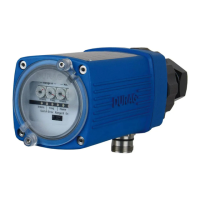3 Explosion protection
D−LX 200, D−LX 720 23
3 Explosion protection
This chapter only concerns devices and components that can be installed in
potentially explosive and hazardous areas.
You will receive essential information regarding explosion protection, learn
something about the significance of Ex-specifications on the type label and get
safety instructions necessary for the Ex-devices.
Should you require information that is not sufficiently covered in this document,
please request the required information from the relevant agent of DURAG
GmbH. Our Support and Service team will also gladly answer questions
regarding products and applications from the DURAG GROUP. Addresses and
telephone numbers can be found on page 159.
If anything is not clear:
Contact the manufacturer! Get your questions answered.
You can also get information on ventures and products at www.durag.de
3.1 Basics
In many areas of industry, flammable gases, vapours, mist or dust are
produced as a result of production, procession, transport and storage. These
combustible materials can form explosive atmospheres with oxygen, such as
from the air. Should this ignite, for example through an electrical spark, serious
personal injury and material damage could result. The operator of the device is
responsible for preventing any risk of explosion and guaranteeing the required
level of safety.
Therefore the product needs to be designed constructively in accordance with
the latest knowledge regarding explosion protection and manufactured to an
appropriate level of quality. In addition, professional installation and
preventative maintenance of all corresponding components is required.
Devices for areas with a risk of explosion are relevant to safety and are
subject to a particular duty of care. Expert knowledge or explosion protection
(corresponding to the local region) is a prerequisite for any plans or works.
This also applies to the choice of suitable ignition protection and Ex−zone
arrangements, as well as the correct assembly, commissioning, repair or
exchange of equipment and accessories.
The basic principles for explosion protection are the same across the world. In
the Member States of the European Union, explosion protection is governed
by the ATEX guidelines (French ATmosphère EXplosible). The guidelines are
implemented through harmonised European standards that are accepted
world-wide as IECEx (International Electrotechnical Commission Explosive).
There are differences with, for example, North-American explosion protection in
accordance with FM (Factory Mutual) or CSA (Canadian Standards Association).
Specified DURAG-equipment complies with these standards.

